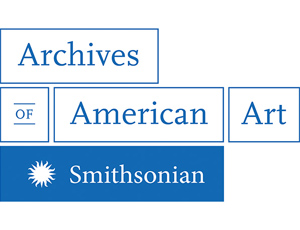New Collections: Marjorie Kreilick Papers
The papers of artist and educator Marjorie Kreilick highlight her contribution to mosaic and public art
:focal(500x367:501x368)/https://tf-cmsv2-smithsonianmag-media.s3.amazonaws.com/filer_public/f3/bb/f3bb7ea7-205f-4b0b-9cde-be49366acd52/franco_fig_1_for_blog_sv.jpg)
Marjorie Kreilick (b. 1925) is a key figure in the development of public art and mosaic in the twentieth century. Largely located in the Midwest, her extant works include an ambitious project of ten murals created throughout ten floors of the Wisconsin State Office Building in Milwaukee (completed 1963). Her papers feature large cartoons for this and other projects. These preparatory materials not only provide information about color, form, and scale, but also often come attached with material samples of her tesserae, small pieces of stone and glass. Such materials are prominent in many photographs of Kreilick posed and at work in her studio. Her papers also contain extensive notation about mosaic materials, including lists of products used, suppliers, and annotated diagrams.
Kreilick’s interest in mosaic was cemented during an apprenticeship in Rome. She maintained a studio in the Italian capital from 1961 to 1963 and was awarded the Rome Prize in painting in 1963. The papers include photographs and other documentation from this period. This brief, but intensive, immersion in Italian mosaic practices informed the many public mosaics she created across her career, and Kreilick continued to source materials from Italian producers long after her return to the United States. The papers contain printed material from these and other commercial suppliers, an especially useful source for future conservators of her work. Kreilick joined the Italy-based International Association of Contemporary Mosaicists in 1983, despite having no current members to list as references on her application. The papers hold dozens of documents related to the organization, a testament to her investment not only in the craft of mosaic, but in the international community that supported it.
/https://tf-cmsv2-smithsonianmag-media.s3.amazonaws.com/filer_public/51/33/5133fc14-5de3-450d-b3fe-51fa3cad6984/franco_fig_2_for_blog_sv-cropped.jpg)
Kreilick retired from the art faculty at the University of Wisconsin-Madison in 1991, following a 38-year career instructing generations of artists in painting and sculpture, and developing curricula geared toward implementing better health and safety practices across media. Among her many students was glass artist Marvin Lipofsky, who discusses Kreilick in his 2003 oral history interview for the Archives. Kreilick’s papers related directly to her teaching—primarily lecture notes and associated slide carousels—are preserved in the university’s Special Collections.
In addition to architecturally sited, large-scale murals, Kreilick created standalone mosaic artworks at the scale of typical easel paintings. The papers hold studies for these, including a project bozzetto for a round work composed of abstract wave forms. The Chazen Museum of Art in Madison acquired key examples of such works around the same time Kreilick’s papers were donated to the Archives.
The Kreilick Papers were closely studied and organized by researcher and artist Lillian Sizemore, who, along with Kreilick’s attorney, friend, and fellow faculty member William “Bill” Whitford, oversaw the donation on the artist’s behalf. In her writings and public presentations, Sizemore associates Kreilick with other significant mid twentieth-century women artists working on public art. Notable among them is Hildreth Meière, whose extensive papers also reside at the Archives.
This text originally appeared in the Fall 2022 issue (vol. 61, no. 2) of the Archives of American Art Journal.

